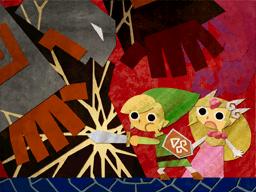Figuring out what you like in a story is not the same as determining what's good about its design and craft. With the former, you can search your feelings and go by your gut. With the later, you need to be able to express what a story does or how it works. Either way, using the CED system will help you line up the pieces. Critiquing a story is not about checking items off the list. It's also not about all of the things the story could have done. Critiquing a story requires carefully looking at what's there and understanding how the parts strength or weaken each other.

We all have our preferences. Some like stories with believable characters. Others love complex narratives. It's helpful to know what your preferences are. Knowing helps us anticipate and deal with our biases. Beyond personal preferences, the facets of the CED system are not all weighted equally. It's simple. For a story to be good, it needs to have components that work together (content). Then it needs to present these components so that the audience can understand the story (preferably on their first encounter (execution)). Finally, it's icing on the cake for a story to be unique, creative, or consistent with other works (discourse). To sum up, the order is content, execution, then discourse. Imagine a pyramid structure with content as the base.
Because this priority exists, it doesn't make sense to me to fault a story severely for a facet of lesser priority. It doesn't irk me so much when characters have a few inconsistencies between sequels. It's not so big of a deal if the execution language/style is particularly incongruous with its medium. Unless the short comings significantly detract from the execution and, more importantly, the story content, I tend not to fault the work at all. What I want to know about a story is what's good (i.e. consistent and connected).

All stories are an artifice i.e. a clever trick or crafty creation. They reflect their creator(s) and other aspects of the world. Likewise, video games are an artifice. Being an artifice also means that there's some facet, layer, or element to the work that isn't real. But by representing and reflecting the right amount of reality we can relate to in the right ways, we're meant to buy in to the work itself. In the same way we can forget that we're reading black and white text on a book page, we can become absorbed into a play, movie, painting, song, dance performance, or video game. I've often described this quality of humans interacting with video games as being a "half-real" experience coined from Jesper Juul's work.
We are pattern and consistency seeking creatures. We don't first experience by checking whether something is real or not. We automatically believe it's real, relate to it with our memories, and we make up new ideas/models if something doesn't fit. It's only after all else fails that we conclude that something is not real. In this way, we use our own experiences and stories we've collected from our lives as a lens to view the world.

Your preferences reflect your own experiences and personal narrative. We don't objectively experience the world and then filter and sort all the information we like. Strangely enough we filter first and then believe we're getting the whole picture. This is why stories are so important to our lives. And it's also why most people have such a hard time understanding just how complex and multifaceted stories are. We are absolutely bound by our language and collected stories. If you don't believe me, do take the time to listen to this Radiolab podcast about words and the stories we tell ourselves.
If you don't recognize your own preferences and biases, your appreciation of all types of stories is highly likely to continually drop. This is because your understanding of stories is a feedback loop because it is also your world lens. The wider your lens, the more you'll see and the more you'll appreciate. The smaller your lens, the less you'll see. At this point your preferences and tastes will gradually narrow, shrinking the lens even further. At its worse, you'll find yourself enjoying little, almost vehemently holding on to some past work that's worth has been exaggerated in your mind due to nostalgia and the idea I call sympathetic resonance (more on this concept later), and lashing out at everything else when it doesn't live up to the impossible and ill-defined standards you have in your mind.

I suggest simply taking on the attitude of being curious rather than condemning. Question instead of cut down. Try to see the world through as many lenses as possible. If you do, you'll learn more. You'll relax like never before (being able to fully express yourself while addressing/answering deep lingering questions is incredibly cathartic). And you'll live a better life. This advice works for understanding stories and by extension people, cultures, and religions. It never hurts to understand people better. After all, they dream up and make the video games that we love.
So to bring the discussion back to video games before we move on, I'm no longer accepting any more excuses. Those common caveats of "for a shooter," "for a kid's story," or even "for a video game" don't work. Just tell me what the story is (content), how it delivers (execution), and what you like or dislike about it (possibly discourse). I'm not going to explain or argue why video games are art and already tell unique and high quality stories, especially if you don't even understand story design or care to consider video games and other mediums on the same level at the start of an analysis.
In part 5, I've got another theory about a common bias I've found many have, e.g. holding complex stories high over simple ones. I'm even submitting my own poetry to prove a point.